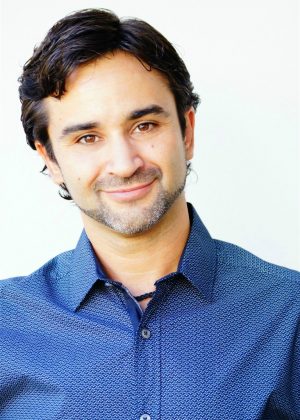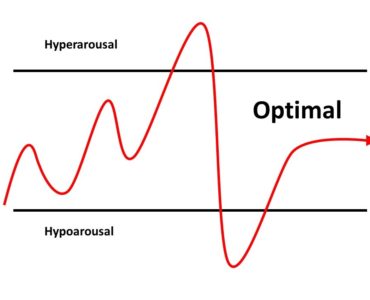Overview
Cultivating a sense of mindful awareness is an active process that involves attention and curiosity. This is the opposite of judging, reacting, or avoiding (these are the default modes by which people typically function!). As is discussed in further detail (here), developing your ability to ‘stay present’ and to remain mindfully aware, form a solid foundation for learning other helpful skills that you will likely need to learn and implement (depending on your unique situation). In other words, without mindful awareness, trying to learn tools and skills will not be beneficial – because you will not be aware of when you need to use them (!).
Mindful awareness is the ability to observe all experiences without judgment. Initially, developing mindful awareness can be challenging, which is why it can help to have a good understand of what mindfulness is (and why mindfulness is not enough). It can also help to have someone guide you through the process. In lieu of a guide, or a teacher, guided audio exercises are a fantastic way to begin your mindfulness practice.
Although ‘audio exercises’ are not mandatory for learning Mindfulness skills, often it can be helpful to have a guide – and it helps to have several options because people have difference preferences for the speaking voice and pacing of the narrator, and also the activity.
With regular practice, you will develop an ability to stay present and observe, you may also experience a reduction in your reactivity, and you will begin to see things more clearly (i.e., without judgement). In other words, you will be better able to experience things for what they really are and this will allow you to choose (vs react) how you want to respond to difficult internal experiences and other challenging situations.
How to use Audio Exercises
Below are a list of guided mindfulness exercises that have been carefully selected for the quality of their guidance. It is important to experiment with several exercises so that you can find an exercise and a guided voice and speaking style (e.g., male or female, tone, pacing) that you find pleasant to engage with – everyone has their own preferences.
A common mistake people make when learning new psychological skills is that they only practice when they are distressed. This is a terrible way to go about skills practice. Although mindfulness can reduce stress and has many health benefits supported by science, whenever we use mindfulness (or anything for that matter) as a ‘trick’ to get rid of difficult emotional states, the real intention of our behaviour is to avoid emotion which is ultimately impossible. This is not what mindfulness was designed for.
Whenever we misuse mindfulness – or any other activity – to avoid difficult thoughts, or emotions, this is a form of resistance. Yet, resistance / avoidance often contributes to maintaining or even exacerbating the problem. In other words: “What we resist, persists”. (You can read more about the problem of avoidance and other common misconceptions people initially have when learning Mindfulness, here.)
Remember: Mindfulness is the opposite of avoidance; it will often make us more aware of our inner worlds or physical sensations (not less), so that we are more able to ‘notice’ (vs react) which with practice can give us a sense of freedom from our mind and/or our emotions. Thus, if you are someone who has chronically avoided your inner world or the sensations in your body for reasons such as anxiety and/or trauma, please tread lightly and consider professional guidance in conjunction with this work.
In sum, rather than ‘avoidance’, please view the use of Mindfulness practices as a way to free yourself from reactivity by increasing your ability to:
- Notice and observe just how busy your mind is;
- To notice how easily you can get ‘taken away’ by a thought / image / sound / emotion / physical sensation; and,
- To understand through your direct experience with Mindfulness (i.e., experientially), that by observing and noticing events in your mind / body / emotions that you can in fact become separate from (and more accepting of) your mind and its thinking, and your body and its perceiving.
This is just the first step. Mindful awareness is often not enough. Depending on your own personal situation and mental health needs, learning additional psychological and behavioural skills is recommended (I discuss this in detail here). But for now, let’s be guided by the science and wisdom of mindful awareness, and learn to practice developing this important attentional skill!
Note. Each link will take you to an external website.
High Quality Mindfulness Audio Resources (all are free)
Note. Each link will take you to an external website:
- Respected psychologists and mindfulness teachers Tara Brach & Jack Kornfield have a FREE 40-day Mindfulness Audio Course here. Each daily lesson is 10-15 mins in duration and features a short talk and guided meditation designed to assist you in establishing a meditation practice.
- For brief introductory mindfulness exercises created by the University of California’s (UCLA) Mindful Awareness Research Centre , download the FREE UCLA Mindful App (iTunes / Google Play). Alternatively, you can also access programs and download guided Mindfulness meditations from their website.
- Here is another absolutely fantastic collection of Mindfulness exercises
- Here is a large collection of free mindfulness & acceptance exercises at Portland Psychotherapy Clinic
- Mindfulness for Teens: Here are several brief but helpful guided mindfulness activities (suitable for teens & anyone new to Mindfulness)
Compassionate Mind Training (CMT) exercises
- This is a collection of 10 Compassionate Mind Training (CMT) exercises by Professor Paul Gilbert, the creator of Compassion Focused Therapy (CFT). Paul Gilbert has been knighted Order of the British Empire (OBE) for his life’s contribution to the Psychology profession.
- Here are audio exercises from the Centre for Compassion Focused Therapy & Mindfulness Focused CBT (New York)
- Also be sure to check out Dr Kristin Neff’s self-compassion guided meditations & exercises and her 6 hour program “Self-Compassion Step by Step” (available for free via a 2 month Amazon Audible subscription).
Working Mindfully with the Body: Guided Mindful Yin Yoga
Compared to most other forms of Yoga, during yin yoga simple postures are held for longer periods of time (usually between 3-5 minutes) in a Mindful and receptive way. The entire practice is often longer than 30mins in duration. The deeper physical work of Yin Yoga practice, combined with the associated opportunity for increased self-awareness, can help to release the accumulation of tension and stress to promote more freedom and well-being in both body and mind, and emotionally.
- Good examples of a Mindful approach to Yin Yoga are here and here. Each practice is approximately 60 minutes.
- If you like this form of mind-body care, may also find Yin Yoga classes are offered in your local area, and there certainly are many free (and paid) Mindful Yin Yoga courses available online.
Further Resources:
- Common Obstacles in Learning Mindfulness
- The healing benefits of being (Mindful) in Nature
- Calm yourself quickly with Soothing Rhythm Breathing
- Your Brain’s Threat System
- Understanding your Window of Tolerance
- The Physiology of Self-Criticism
- Your Brain’s 3 Emotion Regulation Systems
- How to get the most out of therapy
- A list of all articles that I have written
Book an Appointment
Mindfulness &
Clinical Psychology Solutions





